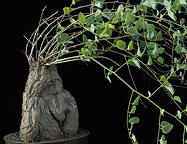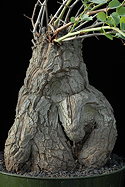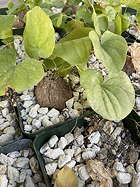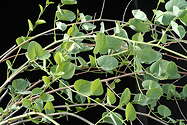The genus Dioscorea includes over 600 species from around the world. Only a handful of these are succulent caudiciforms and are primarly South African with the exception of D. Mexicana, which is superficially similar to D. elephantipes but with a flatter, tortoise-shell-like caudex. It may at first come as a surprise that the Dioscoreaceae is a monocot family, but their usually broad, cordate leaves exhibit the parallel venation characteristic of monocots. Furthermore, the small flowers have 6 tepals in two series, and the fruits are 3-angled. Propagation is complicated by the fact that plants are unisexual, so one often needs to grow several to be assured of having a mated pair. We had a small crop of seedlings of D. hemicrypta that we bedded out at the base of a fence serving as a trellis for the climbing vines. It was easily distinguished from other Dioscorea species planted nearby by its smaller, mature leaves which are glaucous and ovate, the size and silhouette of an olive. Juvenile leaves of seedlings, however, are more typical of the genus, bright green and cordate. Corky caudexes develop at the base. These are described by Rowley and Eggli in their treatment in the Illustrated Handbook of Succulent Plants, Vol. 2, Second Edition, 2020, as half-buried, “the underground part amorphously lobed like molten lava, above ground part with thick corky irregular ridges and plates.” We have found that caudexes of young plants are smooth as they begin to swell above ground but eventually develop impressive, tuberculate caudexes much like D. elephantipes but of a darker, grayish color. We offer second generation seedlings, HBG 145786, derived originally from seed (HBG 122819) collected by Gerard Marx in S. Africa; W. Cape; 5 km S of Volmoed. $25.
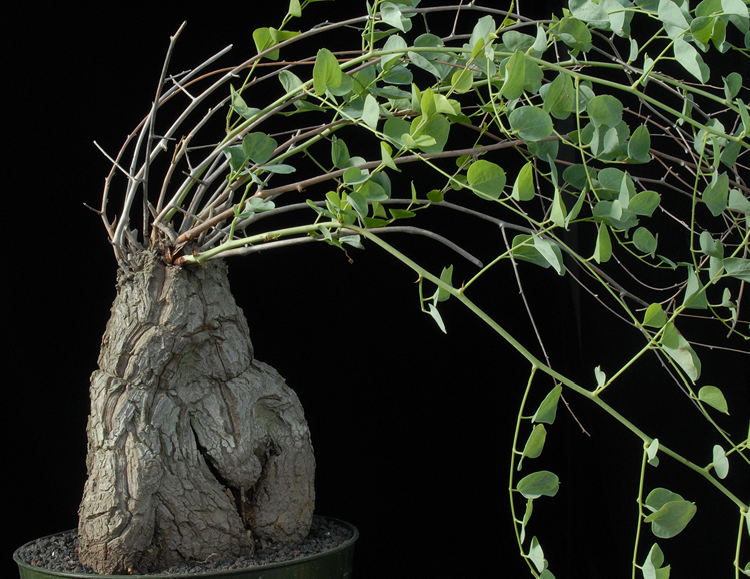
Published in the Cactus and Succulent Journal, Vol. 97 (2), Summer 2025
